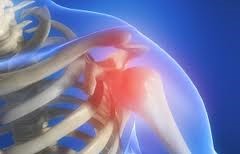Frozen Shoulder or adhesive capsulitis as it is now commonly referred to, is a common, yet poorly understood, painful condition of the shoulder, which effects between 3-5% of the adult population. The condition is most common between 45 and 55 and effects Women more commonly than Men. The exact cause of frozen shoulder is not understood but those who suffer from diabetes or who have weakness related to a stroke are more predisposed.

Typically, the condition is characterised by a painful and progressively stiff shoulder. In most cases it occurs spontaneously, however may occur after trauma or injury to the shoulder. There are currently no validated diagnostic imaging modalities which can diagnose frozen shoulder. There is some recent promising research utilising diagnostic ultrasound to assess changes in the superior joint capsule in early frozen shoulder, however more research needs to be undertaken.
Currently, diagnosis of frozen shoulder tends to be made based on clinical history and physical examination. While the condition can be tricky to differentiate from other injuries to the shoulder in the very early stages, the clinical presentation as the condition progresses, tends to be fairly typical and distinct, with a gradual loss of range, particularly into external rotation of the shoulder being a classical sign.
For many years, the condition has been described as having 3 phases;
1. Freezing, where the shoulder is quite painful and progressively stiff.
2. Frozen, where pain in the shoulder is less and the shoulder remains stiff but is not getting worse.
3. Thawing, where the joint spontaneously starts to loosen up.
The description of 3 distinct phases of the condition appears to be based on research conducted in the 70’s, the validity of which may be questionable. More recent evidence tends to suggest more of a continuum, with an initial inflammatory synovitis of the shoulder capsule, resulting in marked pain on movement and use of the shoulder. This is followed by progressive fibrosis and restriction of the joint capsule. We still do not understand why the underlying inflammatory synovitis spontaneously resolves at some point, resulting in decreased pain, increased movement and use of the shoulder and a resultant decrease in capsular stiffness.
Frozen shoulder has been described as a self-limiting condition for which most people will show signs of significant improvements at 12 to 18 months without any intervention. Unfortunately, only 60% of cases will demonstrate full range of motion at 4 years. In the past, the results of most therapeutic interventions have been shown to be quite poor, when compared to advice and home exercises. There is however recent evidence to support the use of early cortisone injection for the shoulder combined with physiotherapy and home exercises. This approach has been shown to provide superior results in both symptom reduction and improvements in range both in the short and medium term, when compared with advice and exercise alone. Whether this approach results in greater improvement in the longer term requires further research.
Frozen shoulder remains quite a poorly understood condition. While there has been some recent promising research into the management of this condition, there is still much to learn in both why this condition develops and the most appropriate course of management.
Article by Jim Burke
